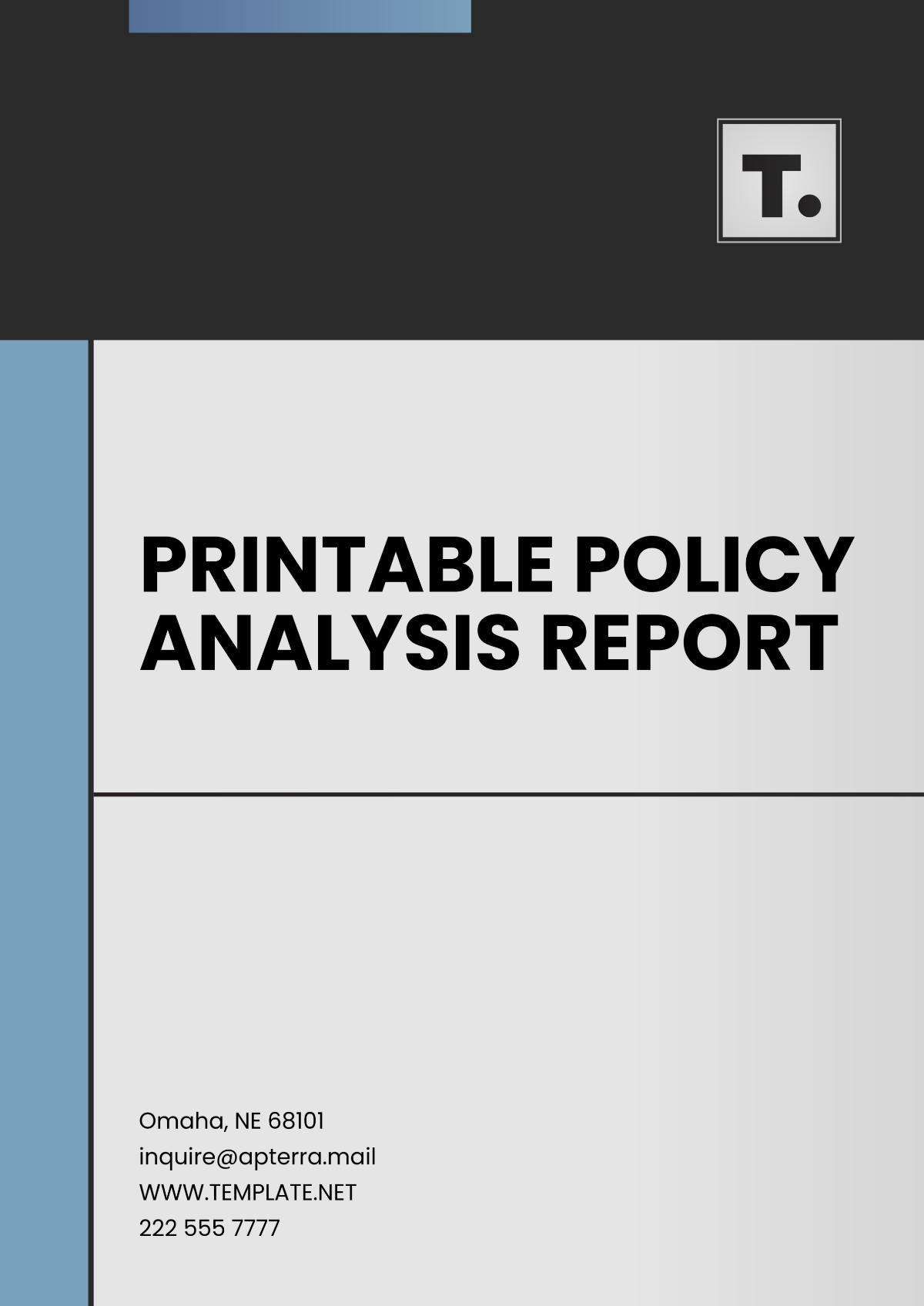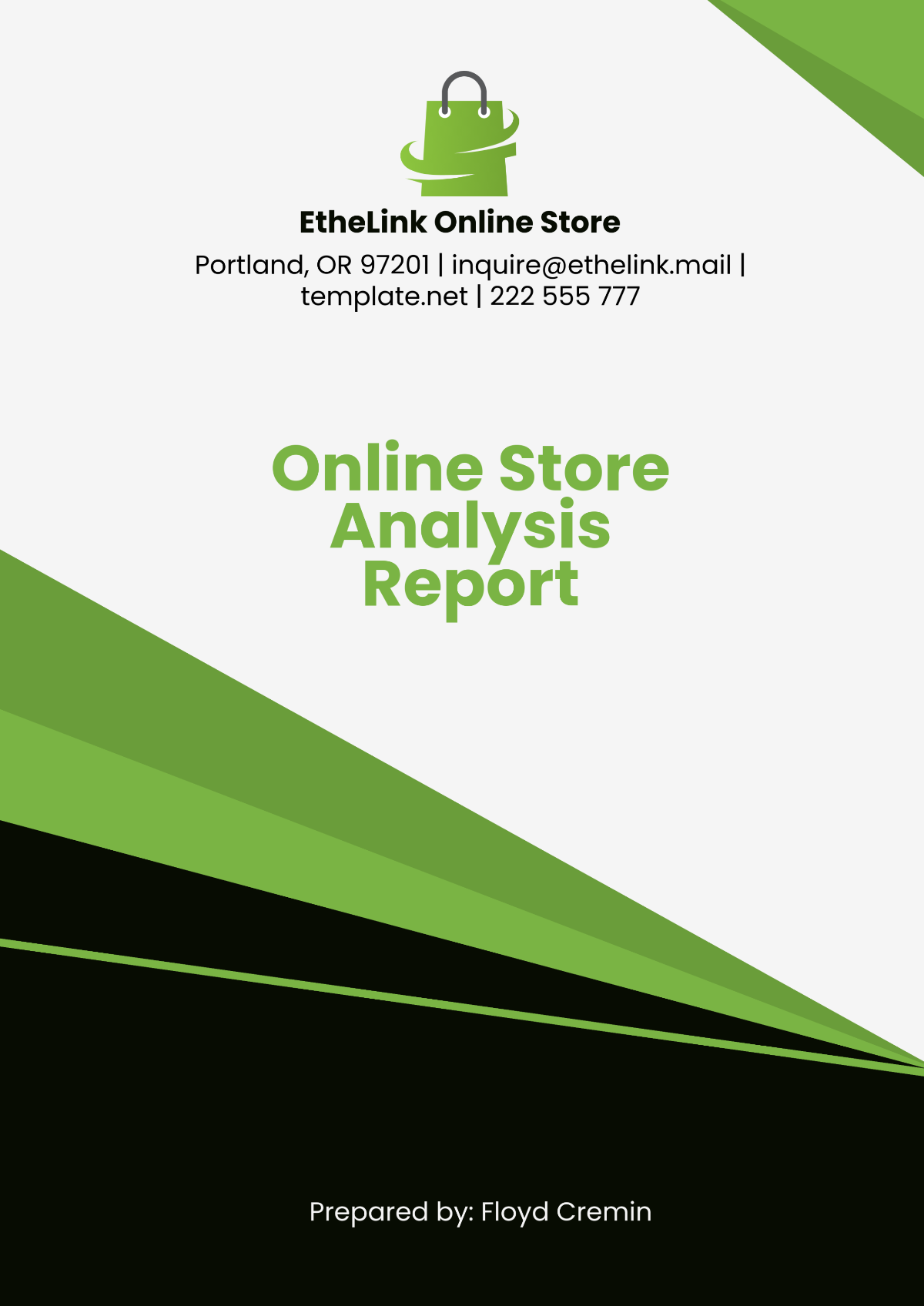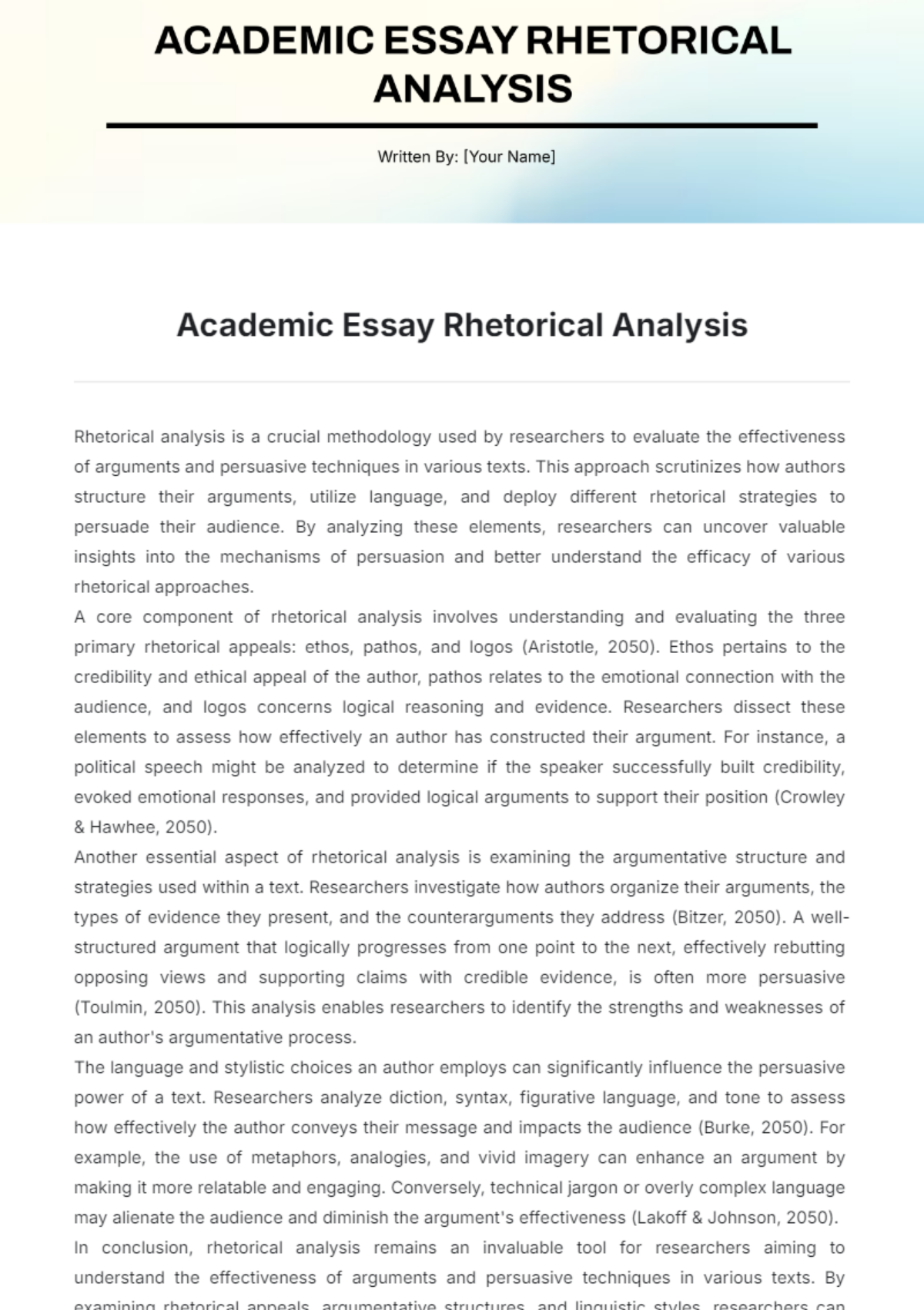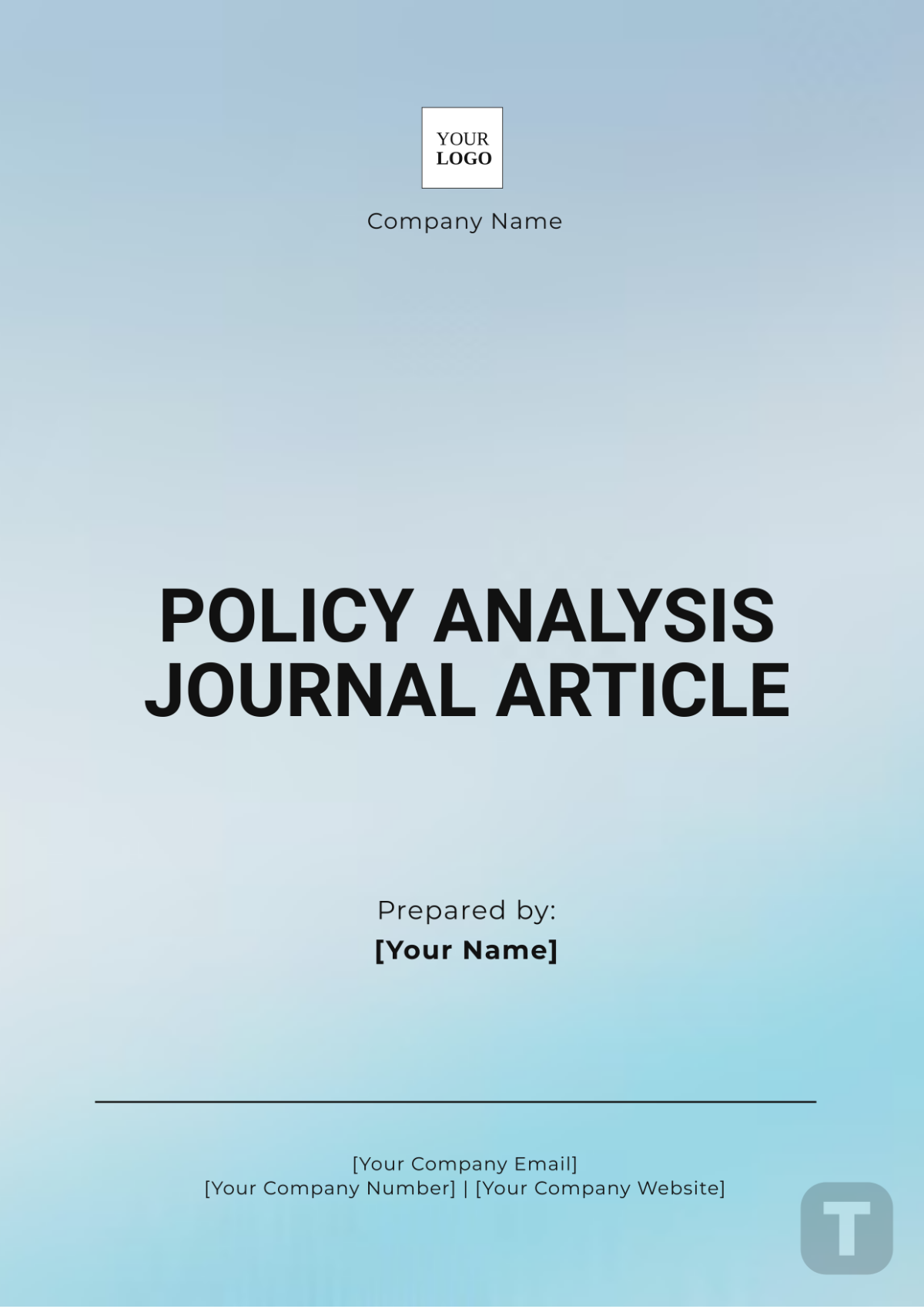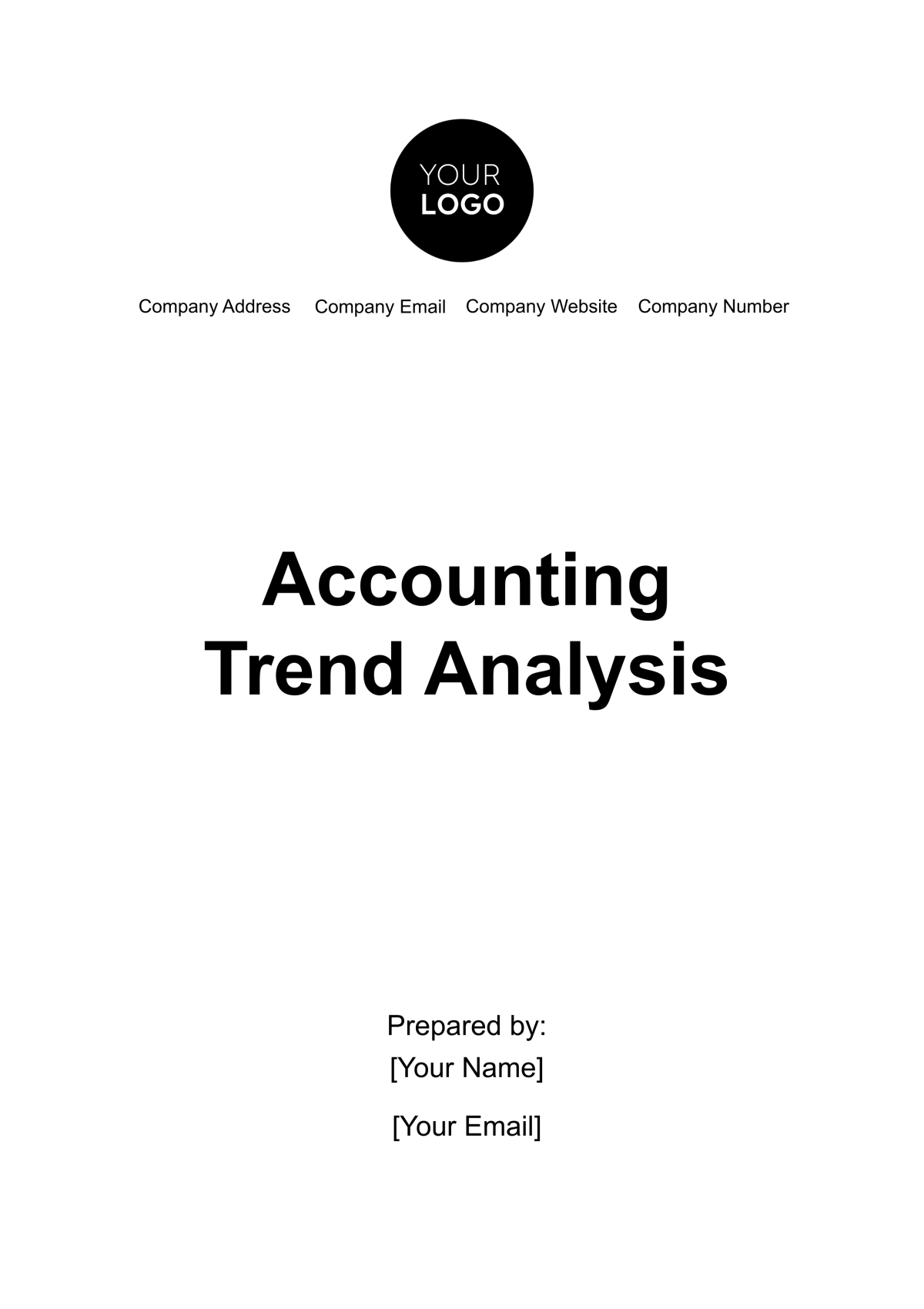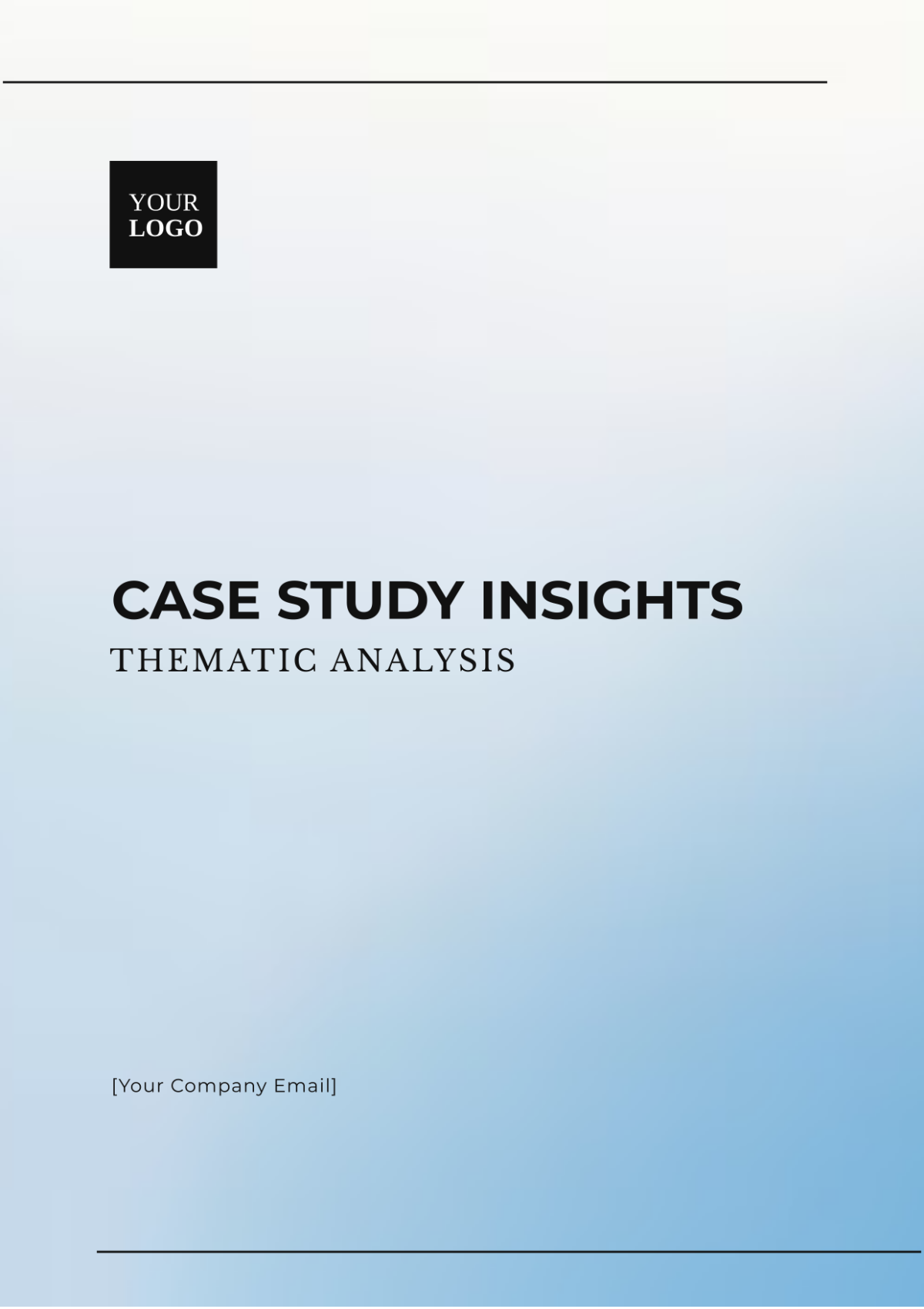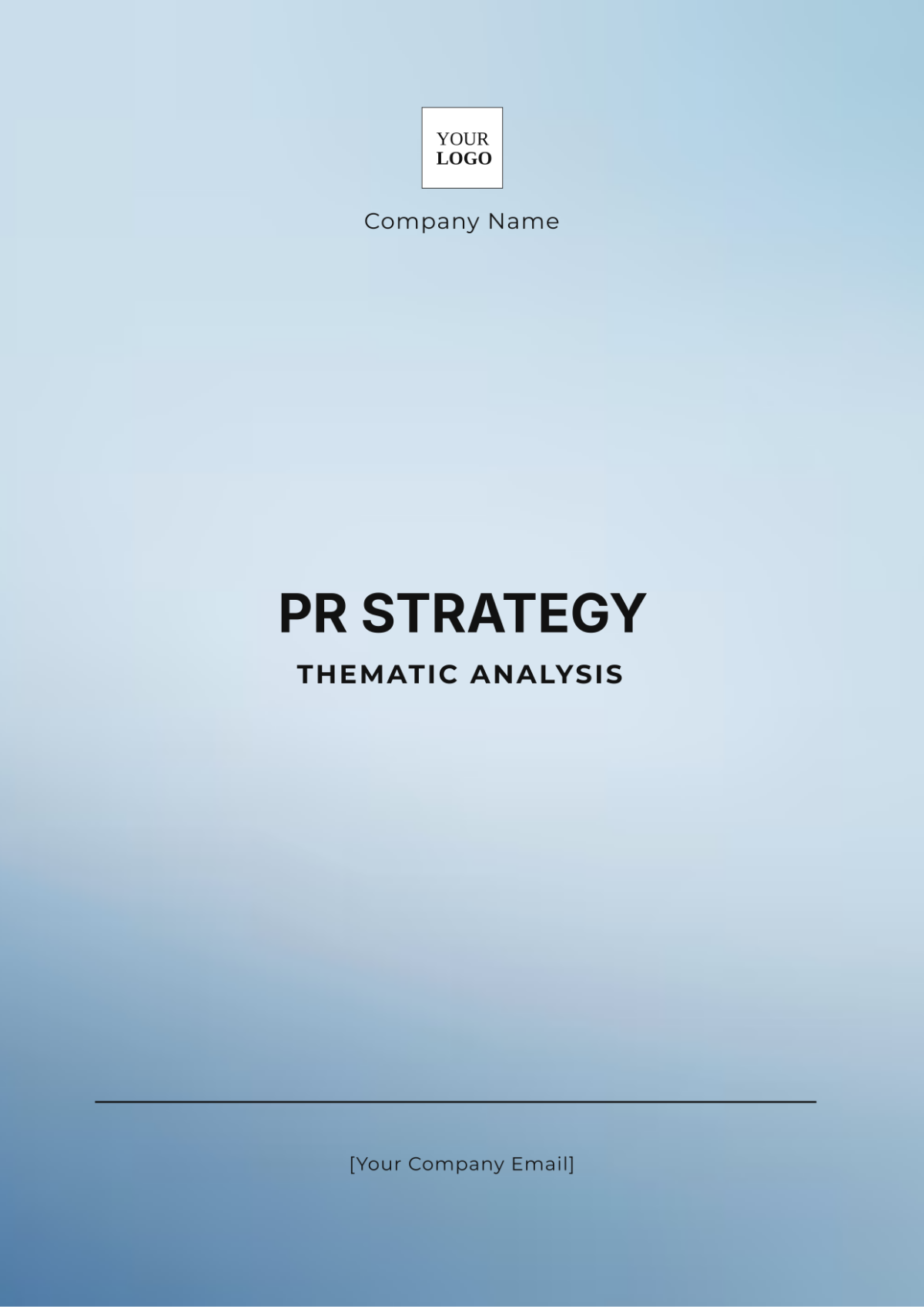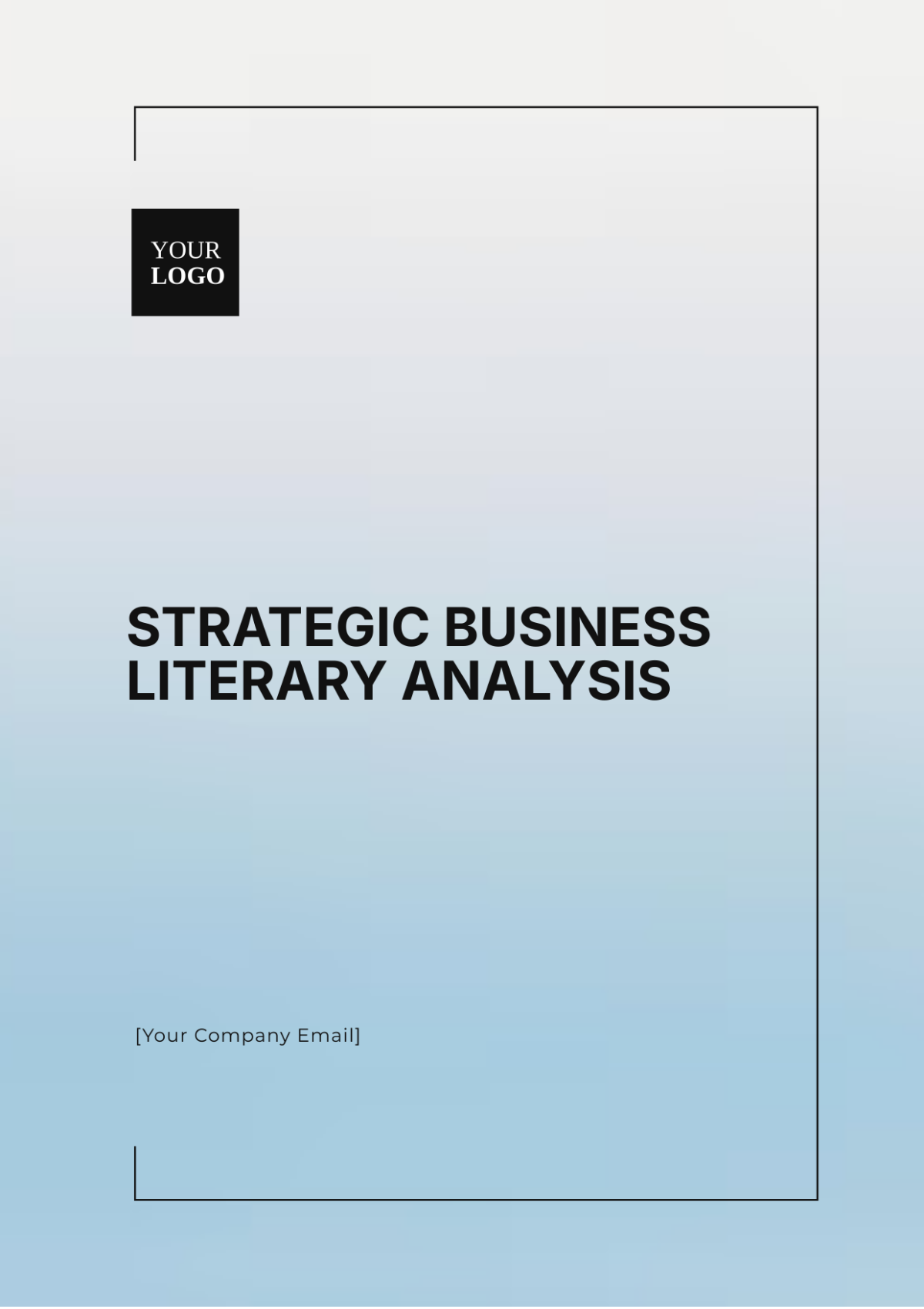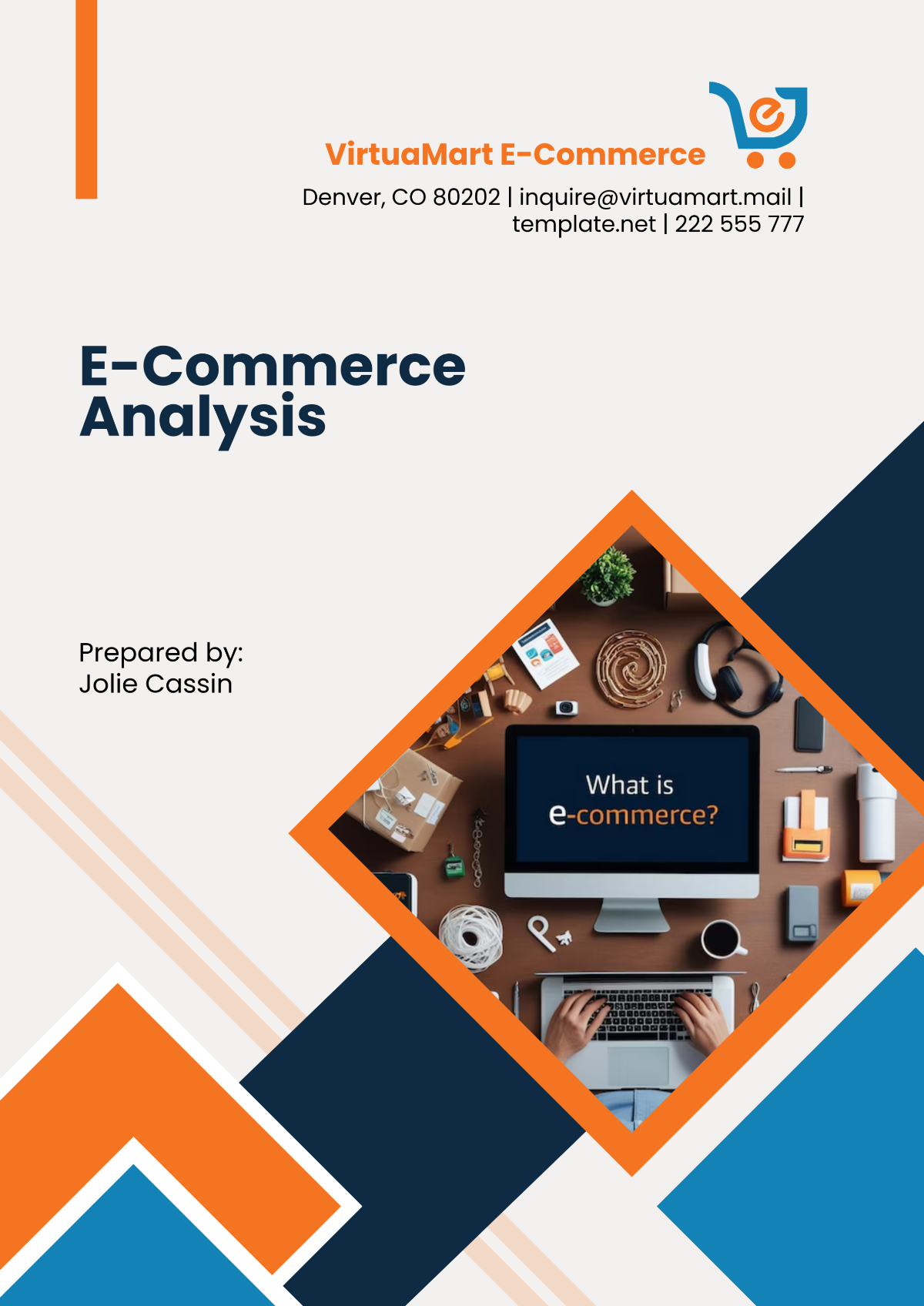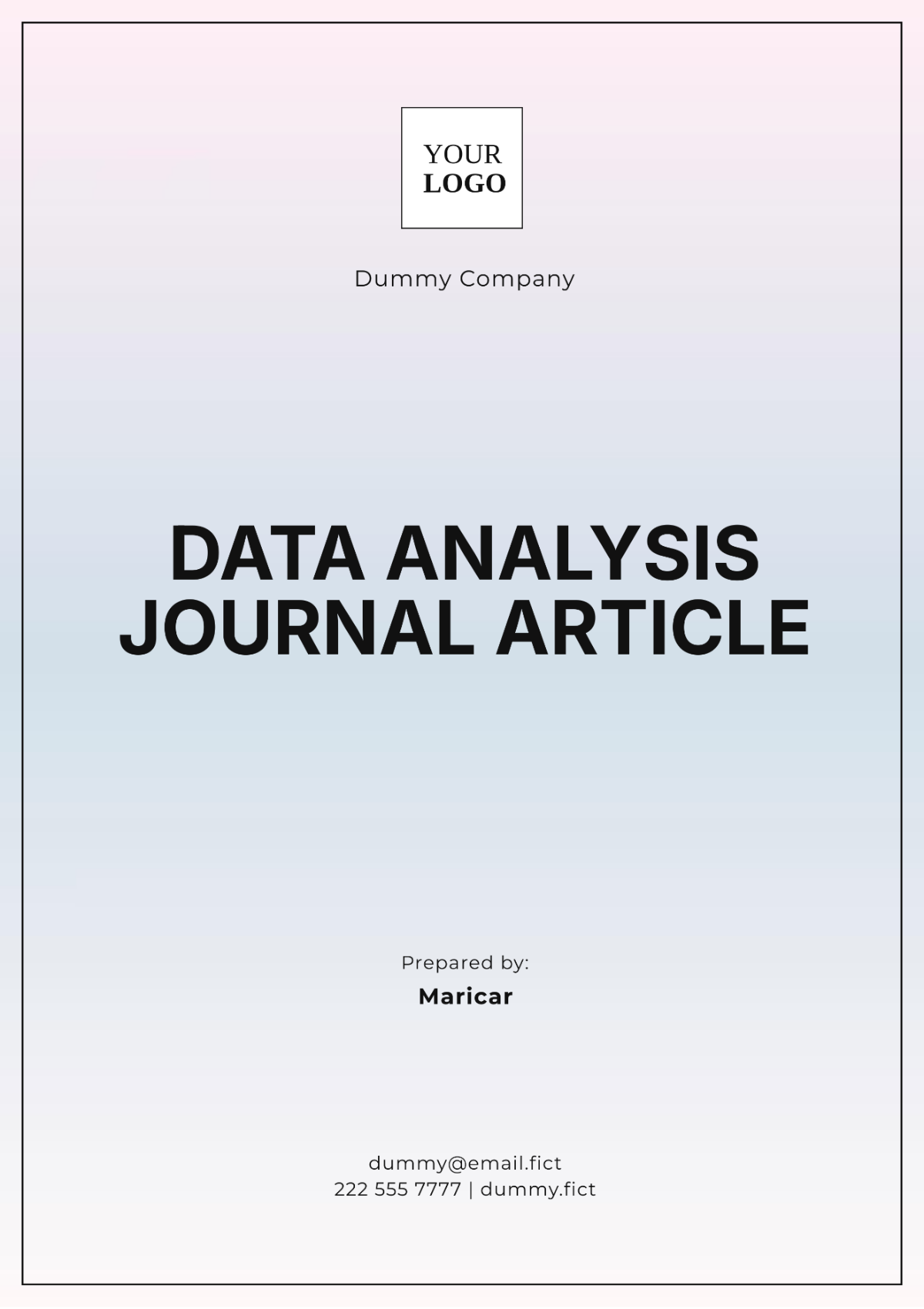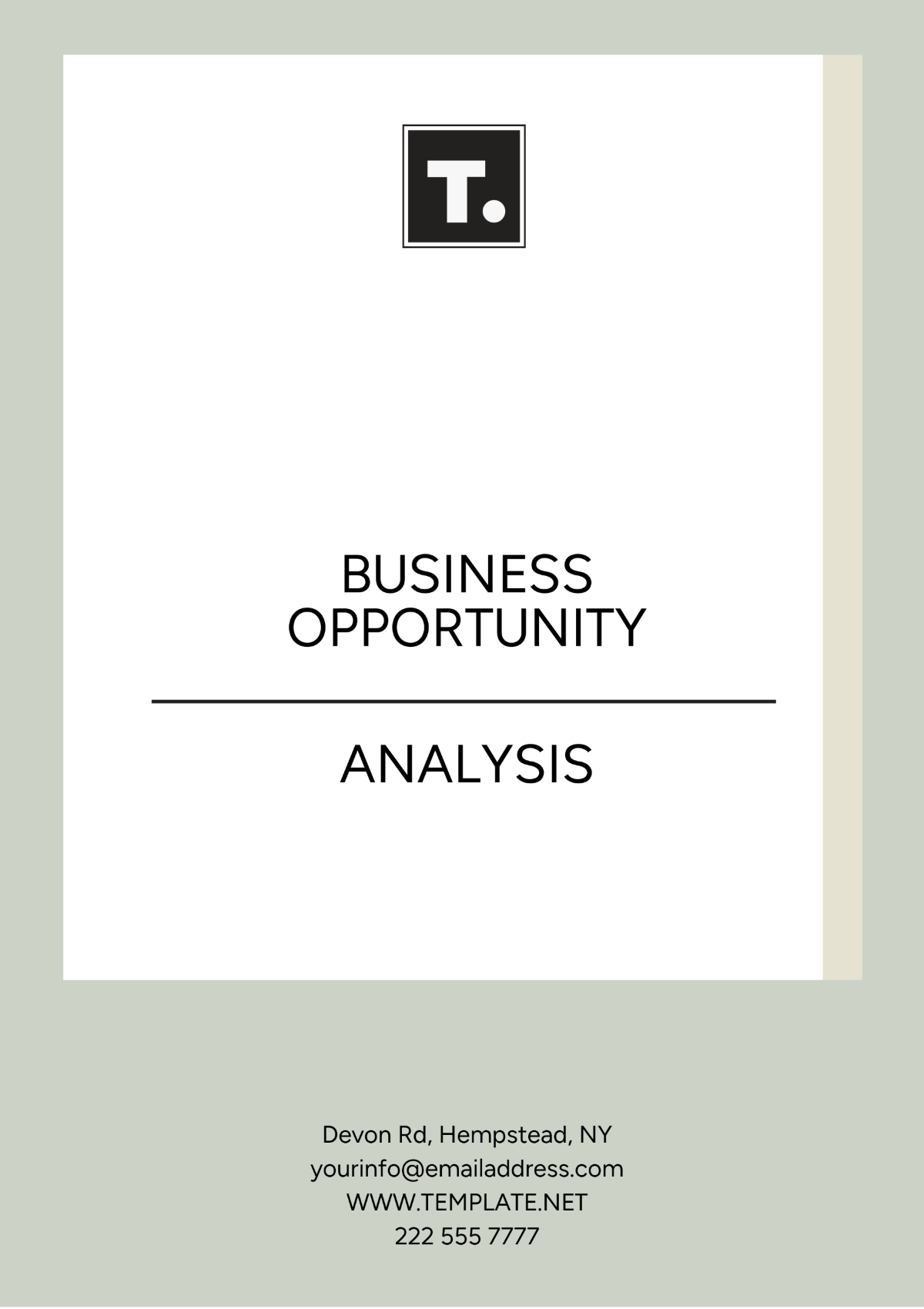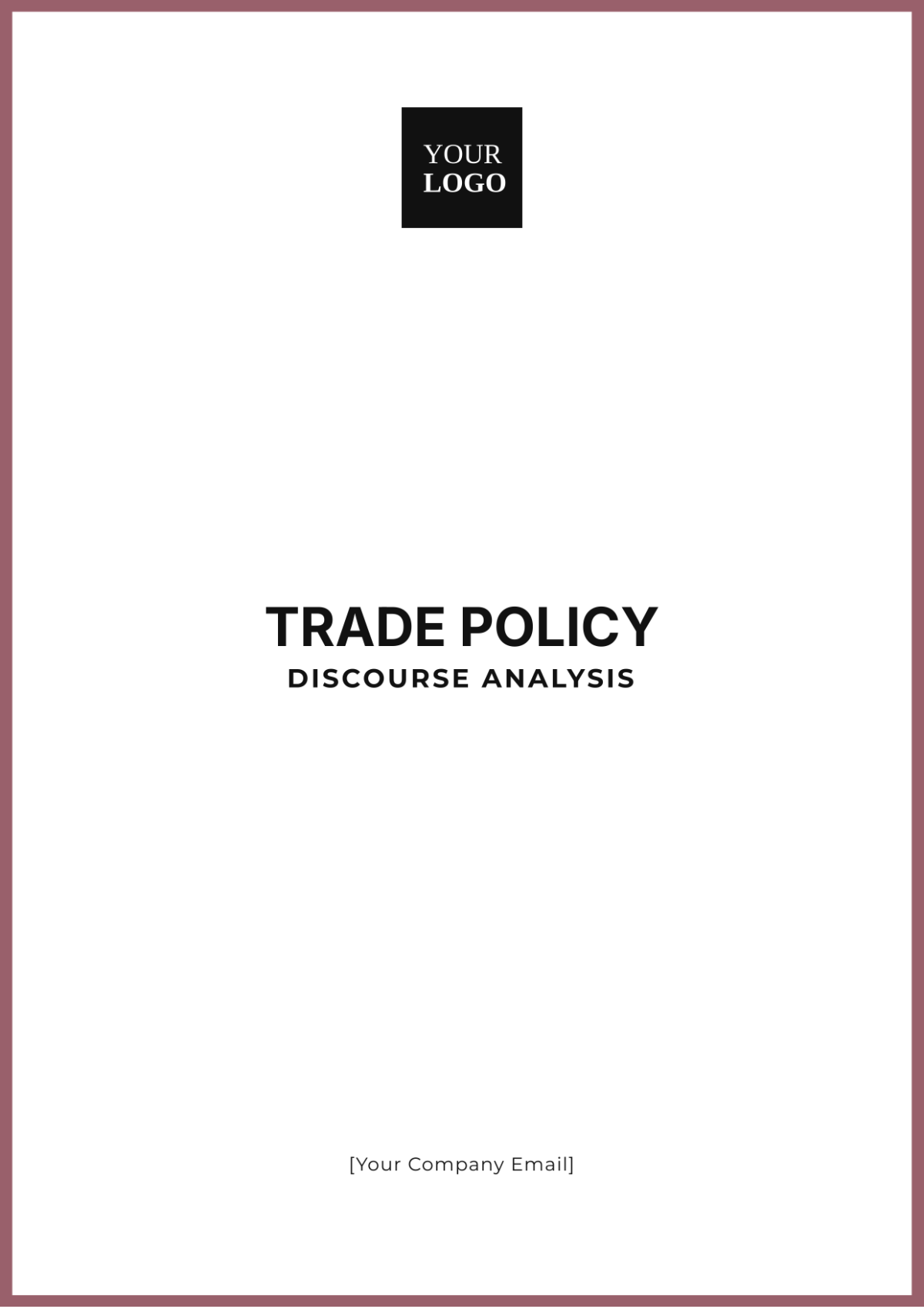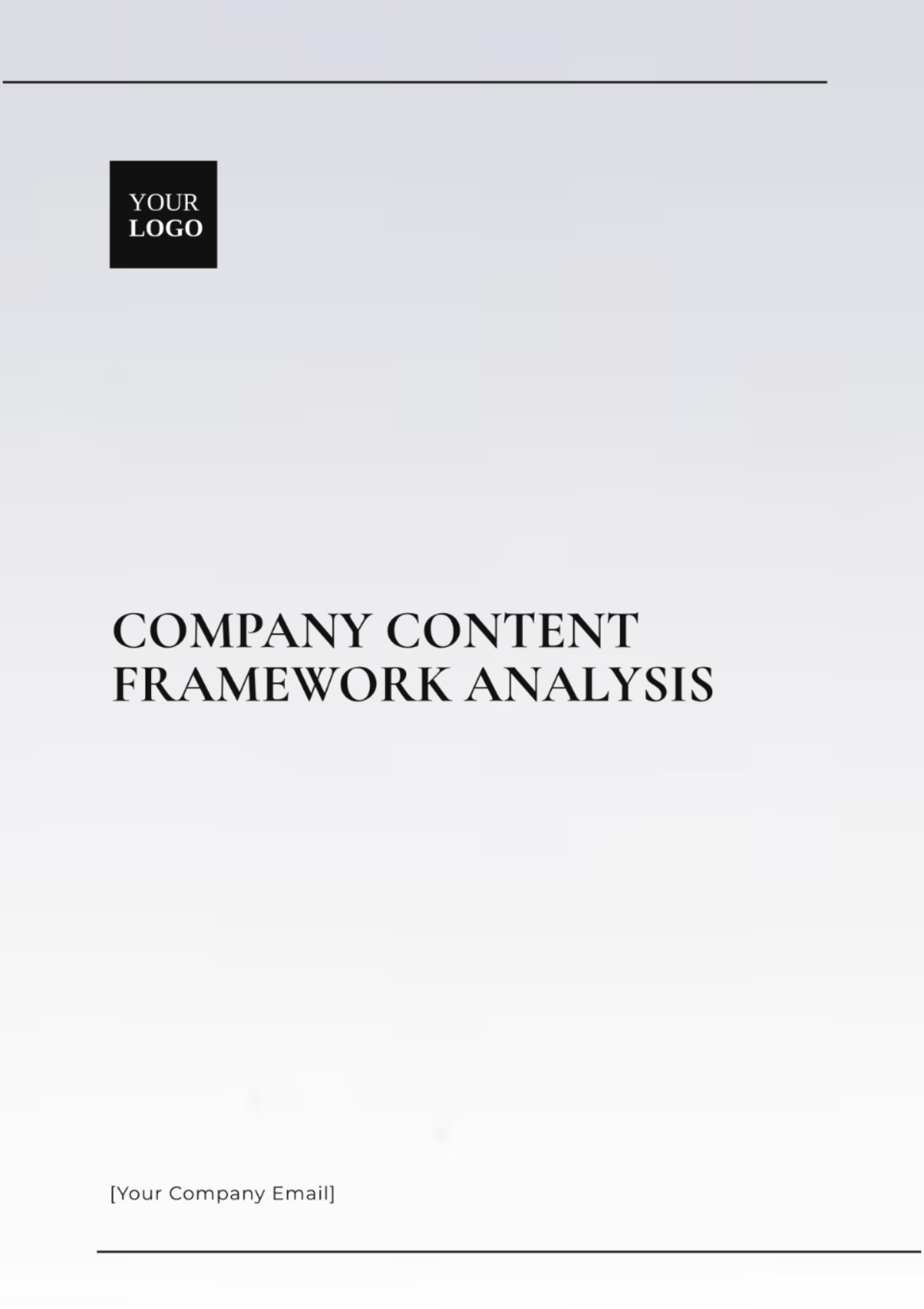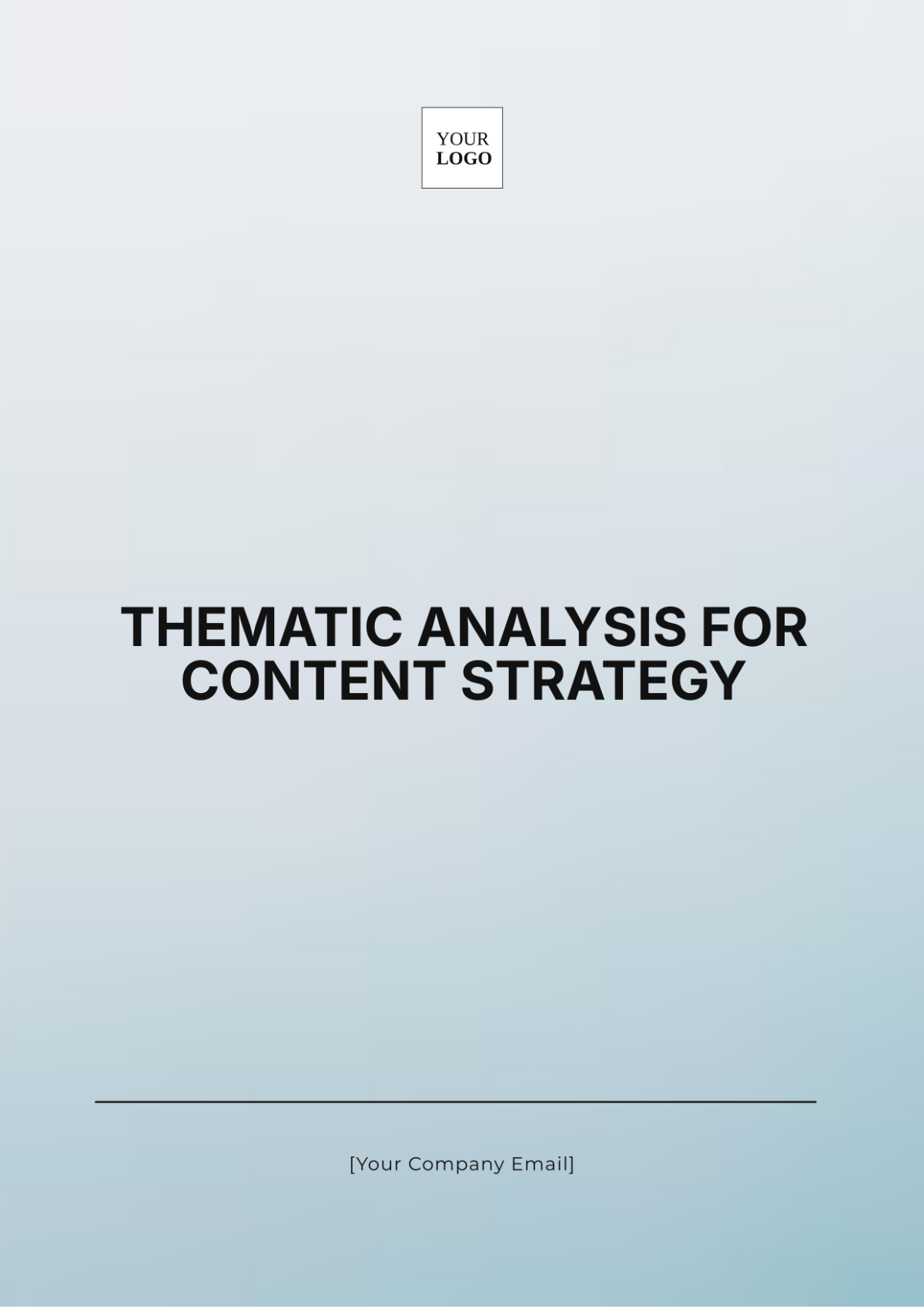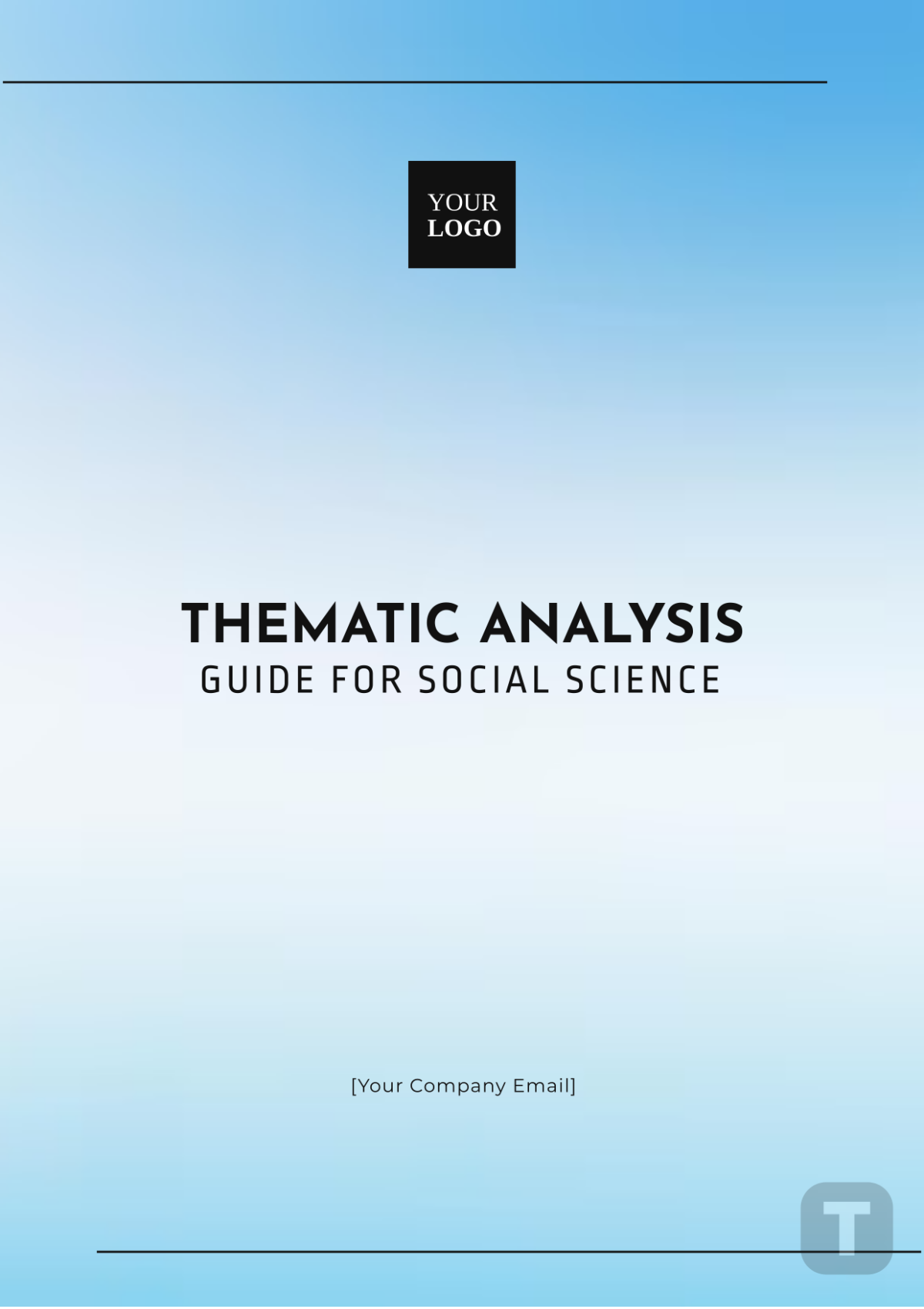Cafe Business Analysis
I. Executive Summary
[Your Company Name] has conducted a comprehensive analysis of the cafe industry to identify key factors influencing success and growth opportunities. This report provides valuable insights into market trends, customer preferences, competitive dynamics, financial projections, and strategic recommendations tailored to optimize [Your Company Name]'s operations and drive sustainable profitability.
A. Objective
The primary objective of this analysis is to equip [Your Company Name] with actionable insights to establish and maintain a competitive edge in the dynamic cafe market. By understanding market dynamics and consumer behavior, [Your Company Name] can effectively target its offerings, enhance customer satisfaction, and maximize profitability.
B. Scope
This analysis encompasses a wide range of factors influencing the cafe industry, including:
Market Trends and Dynamics: Understanding macroeconomic trends and shifts in consumer behavior.
Customer Demographics and Preferences: Identifying target demographics and their preferences to tailor offerings accordingly.
Competitive Analysis: Assessing key competitors' strengths, weaknesses, and market positioning.
Financial Projections: Forecasting revenue, expenses, and profitability to guide strategic decision-making.
Strategic Recommendations: Providing actionable strategies to capitalize on market opportunities and address challenges.
II. Market Trends and Dynamics
A. Industry Overview
The cafe industry has experienced robust growth in recent years, fueled by changing consumer lifestyles and preferences. In 2049, the global cafe market was valued at $237 billion, with a projected annual growth rate of 5.5% through 2055. This growth is driven by factors such as urbanization, increasing disposable income, and a growing appetite for premium coffee and dining experiences.
B. Key Market Drivers
Urbanization: The proliferation of urban areas has led to a concentration of cafes in cities, catering to the fast-paced lifestyles of urban dwellers who seek convenient options for coffee and dining.
Consumer Preferences: There is a noticeable shift towards specialty coffee and artisanal beverages, with consumers seeking unique flavor profiles and high-quality ingredients.
Health Consciousness: A growing segment of consumers is prioritizing health and wellness, driving demand for organic, sustainable, and health-focused menu offerings.
C. Emerging Trends
Sustainability: Cafes are increasingly adopting sustainable practices, such as using biodegradable packaging, sourcing ethically produced coffee beans, and reducing waste through recycling and composting initiatives.
Technology Integration: The integration of technology into cafe operations, including mobile ordering apps, contactless payments, and digital loyalty programs, enhances convenience and improves customer engagement.
Experiential Dining: Cafes are evolving into experiential destinations, offering more than just coffee by hosting live music events, art exhibitions, and interactive workshops to create memorable experiences for customers.
III. Customer Demographics and Preferences
A. Target Market Segmentation
Age Groups: The primary target audience for cafes includes individuals aged 18-45, with a particular focus on millennials and Generation Z, who value experiences and are willing to spend on premium coffee and dining.
Income Levels: Middle to high-income earners represent a significant portion of cafe patrons, as they have the disposable income to indulge in premium coffee and food offerings.
Lifestyle: Urban professionals, students, freelancers, and health-conscious individuals are key customer segments for cafes, each with distinct preferences and consumption patterns.
B. Customer Preferences
Product Preferences:
Specialty Coffee: A majority of customers gravitate towards specialty coffee beverages such as lattes, cappuccinos, and flat whites, driven by their desire for unique flavor profiles and premium ingredients.
Healthy Options: An increasing number of consumers are seeking healthier alternatives, including organic, plant-based, and low-sugar options, reflecting a broader trend towards health and wellness.
Service Preferences:
Fast Service: With busy lifestyles, customers prioritize quick service, especially during peak morning hours, when efficiency and speed are paramount.
Ambiance: The ambiance and atmosphere of a cafe play a significant role in attracting and retaining customers, with factors such as interior design, music, and seating arrangements influencing the overall dining experience.
C. Consumer Behavior Insights
Frequency of Visits: Customers typically visit cafes 3-4 times per week, with variations based on factors such as location, convenience, and occasion.
Spending Patterns: The average spend per visit ranges from $8 to $12, depending on the menu offerings, location, and customer preferences, with higher expenditures observed during weekends and special occasions.
Loyalty Programs: Loyalty programs and rewards schemes are effective in driving repeat business, with approximately 40% of customers expressing a preference for cafes that offer loyalty rewards and discounts.
IV. Competitive Analysis
A. Major Competitors
Global Chains: Established global chains such as Starbucks, Costa Coffee, and Dunkin' have a significant market presence and brand recognition, leveraging their scale and resources to maintain market dominance.
Local Cafes: Independent and boutique cafes differentiate themselves through unique offerings, personalized service, and a focus on community engagement, appealing to discerning customers seeking authenticity and a distinctive experience.
Online Competitors: In addition to traditional brick-and-mortar cafes, online coffee subscription services, e-commerce platforms, and specialty coffee retailers pose a competitive threat, offering convenience and a wide selection of products to consumers.
B. SWOT Analysis
Strengths
Brand Reputation: [Your Company Name] has the opportunity to build a strong brand reputation based on quality, innovation, and customer-centricity, positioning itself as a preferred destination for coffee enthusiasts.
Product Quality: A commitment to sourcing high-quality ingredients, including premium coffee beans, fresh produce, and artisanal flavors, can differentiate [Your Company Name] from competitors and drive customer loyalty.
Location: Strategic location selection in high-traffic areas, urban centers, or commercial districts can maximize visibility, foot traffic, and sales potential for [Your Company Name]'s cafes.
Weaknesses
High Operating Costs: Operating a cafe involves significant fixed and variable costs, including rent, labor, utilities, inventory, and marketing expenses, which can impact profitability and cash flow, particularly during periods of economic uncertainty or market volatility.
Limited Market Presence: As a relatively new entrant or smaller player in the market, [Your Company Name] may face challenges in terms of brand recognition, market share, and competing against established incumbents with extensive resources and infrastructure.
Customer Acquisition: Acquiring and retaining customers in a competitive market requires ongoing investment in marketing, promotions, and customer engagement initiatives, which may strain financial resources and require careful budgeting and prioritization.
Opportunities
Market Expansion: There are opportunities for [Your Company Name] to expand its market presence through geographic expansion, franchise partnerships, or strategic alliances, tapping into new demographics, markets, and revenue streams.
Product Innovation: Continuous innovation and diversification of the menu, including seasonal offerings, limited-time promotions, and collaboration with local artisans or suppliers, can drive excitement, differentiation, and repeat business.
Digital Transformation: Embracing digital technologies, such as mobile ordering apps, online delivery platforms, and data analytics, can enhance operational efficiency, customer convenience, and personalization, unlocking new revenue streams and optimizing the overall customer experience.
Threats
Intense Competition: The cafe industry is highly competitive, with numerous players vying for market share and customer loyalty. Competitors range from global chains to local cafes, each with unique value propositions and strategies, posing a threat to [Your Company Name]'s market position and profitability.
Economic Uncertainty: Economic downturns, recessions, or fluctuations in consumer spending can impact discretionary spending on non-essential items such as specialty coffee and dining out, potentially leading to a decline in sales and revenue for [Your Company Name].
Changing Consumer Preferences: Rapid shifts in consumer preferences, tastes, and trends can pose a challenge for [Your Company Name], requiring agility, adaptability, and innovation to stay ahead of the curve and meet evolving customer demands.
C. Competitive Positioning
[Your Company Name] aims to differentiate itself in the competitive cafe landscape by focusing on the following key areas:
Quality: Commitment to sourcing the finest ingredients, including premium coffee beans, organic produce, and artisanal flavors, to deliver exceptional quality and taste to customers.
Experience: Creating a unique and memorable dining experience through thoughtful interior design, ambiance, music, and customer service, fostering a sense of community and connection.
Innovation: Continuously innovating and diversifying the menu with seasonal offerings, limited-time promotions, and collaborations with local suppliers and artisans to surprise and delight customers.
Sustainability: Embracing sustainable practices and initiatives, such as eco-friendly packaging, waste reduction, and ethical sourcing, to minimize environmental impact and resonate with socially conscious consumers.
V. Financial Projections
A. Revenue Projections
The revenue projections for [Your Company Name] are based on a thorough analysis of market demand, customer behavior, and competitive dynamics. By leveraging data-driven insights and historical performance, [Your Company Name] can forecast revenue with reasonable accuracy to inform strategic decision-making and resource allocation.
Month | Projected Revenue ($) |
|---|---|
January | 60,000 |
February | 58,000 |
March | 62,000 |
April | 64,000 |
May | 66,000 |
June | 68,000 |
July | 70,000 |
August | 72,000 |
September | 74,000 |
October | 76,000 |
November | 78,000 |
December | 80,000 |
B. Expense Projections
Accurate expense projections are essential for [Your Company Name] to effectively manage costs, optimize resource allocation, and maintain financial stability. By forecasting expenses across various categories, including rent, labor, inventory, utilities, marketing, and miscellaneous costs, [Your Company Name] can identify areas for cost-saving opportunities and budget accordingly.
Expense Category | Projected Cost ($) |
|---|---|
Rent | 120,000 |
Salaries and Wages | 200,000 |
Inventory (Coffee, Food) | 150,000 |
Utilities | 30,000 |
Marketing | 50,000 |
Miscellaneous | 20,000 |
C. Profit and Loss Statement
The profit and loss statement provides a comprehensive overview of [Your Company Name]'s financial performance, including revenue, expenses, and net profit. By analyzing the profit and loss statement, [Your Company Name] can assess profitability, identify trends, and make informed decisions to optimize operations and maximize financial returns.
Month | Revenue ($) | Expenses ($) | Profit/Loss ($) |
|---|---|---|---|
January | 60,000 | 40,000 | 20,000 |
February | 58,000 | 40,000 | 18,000 |
March | 62,000 | 40,000 | 22,000 |
April | 64,000 | 40,000 | 24,000 |
May | 66,000 | 40,000 | 26,000 |
June | 68,000 | 40,000 | 28,000 |
July | 70,000 | 40,000 | 30,000 |
August | 72,000 | 40,000 | 32,000 |
September | 74,000 | 40,000 | 34,000 |
October | 76,000 | 40,000 | 36,000 |
November | 78,000 | 40,000 | 38,000 |
December | 80,000 | 40,000 | 40,000 |
D. Break-even Analysis
The break-even analysis helps [Your Company Name] determine the minimum level of sales required to cover fixed and variable costs and achieve profitability. By understanding the break-even point, [Your Company Name] can set realistic sales targets, assess business viability, and mitigate financial risks.
Fixed Costs: $400,000 annually
Variable Costs: $5 per customer
Break-even Point: Fixed Costs / (Average Revenue per Customer - Variable Cost per Customer)
VI. Strategic Recommendations
A. Marketing Strategy
A robust marketing strategy is essential for [Your Company Name] to attract customers, drive sales, and build brand awareness. By leveraging digital channels, local partnerships, and loyalty programs, [Your Company Name] can effectively reach target audiences and differentiate itself in the competitive market.
Digital Marketing: Utilize social media platforms, email marketing, and online advertising to engage with customers, share brand stories, and promote new products and promotions.
Local Partnerships: Collaborate with local businesses, organizations, and events to increase brand visibility, reach new audiences, and tap into community networks.
Loyalty Programs: Implement a loyalty program to reward repeat customers, incentivize purchases, and foster long-term relationships, enhancing customer retention and lifetime value.
B. Operational Improvements
Operational excellence is crucial for [Your Company Name] to deliver consistent quality, efficiency, and customer satisfaction. By investing in staff training, supply chain optimization, and technology integration, [Your Company Name] can streamline operations and enhance the overall dining experience for customers.
Staff Training: Provide comprehensive training programs for frontline staff to ensure they possess the necessary skills, knowledge, and customer service etiquette to deliver exceptional service and represent the brand effectively.
Supply Chain Optimization: Establish partnerships with reliable suppliers and vendors to ensure a steady supply of high-quality ingredients, reduce procurement costs, and minimize wastage through efficient inventory management practices.
Technology Integration: Embrace technology solutions such as point-of-sale systems, inventory management software, and online ordering platforms to streamline operations, improve order accuracy, and enhance customer convenience. By leveraging technology, [Your Company Name] can automate routine tasks, gather valuable data insights, and optimize resource allocation for maximum efficiency and productivity.
C. Product Diversification
Diversifying the product offering is essential for [Your Company Name] to cater to diverse customer preferences, drive sales, and stay competitive in the market. By introducing new menu items, seasonal specials, and merchandise, [Your Company Name] can attract new customers, encourage repeat visits, and increase overall revenue.
Seasonal Menus: Rotate the menu seasonally to feature fresh, seasonal ingredients and flavors, aligning with customer preferences and culinary trends. Offer limited-time promotions and specials to create excitement and urgency, driving traffic and sales.
Healthy Options: Expand the menu to include a variety of healthy and wellness-focused options, such as plant-based alternatives, gluten-free choices, and low-calorie snacks. Catering to health-conscious consumers can broaden [Your Company Name]'s customer base and appeal to a wider demographic.
Merchandise: Capitalize on brand loyalty and customer affinity by offering branded merchandise such as mugs, t-shirts, and accessories. Merchandise can serve as a revenue stream, promotional tool, and extension of the brand experience, reinforcing brand identity and fostering customer engagement and loyalty.
D. Customer Experience Enhancement
Delivering exceptional customer experiences is key to [Your Company Name]'s success and long-term sustainability. By prioritizing ambiance, community engagement, and personalized service, [Your Company Name] can differentiate itself from competitors, build customer loyalty, and drive positive word-of-mouth referrals.
Ambiance and Decor: Create a welcoming and inviting atmosphere by investing in interior design, decor, lighting, and music that reflects [Your Company Name]'s brand identity and resonates with target customers. Consider factors such as comfort, aesthetics, and functionality to enhance the overall dining experience.
Community Engagement: Foster a sense of community and belonging by hosting events, workshops, and activities that bring people together and encourage social interaction. Collaborate with local artists, musicians, and organizations to showcase talent, support the arts, and strengthen community ties.
Personalized Service: Prioritize personalized service and attention to detail to make customers feel valued and appreciated. Train staff to anticipate customer needs, provide recommendations, and resolve issues promptly and courteously, enhancing customer satisfaction and loyalty.
VII. Conclusion
[Your Company Name] has the potential to thrive in the competitive cafe industry by leveraging market insights, understanding customer preferences, and implementing strategic recommendations. By focusing on quality, innovation, and customer experience, [Your Company Name] can establish itself as a preferred destination for coffee enthusiasts, drive sales, and achieve long-term success and profitability in the dynamic cafe market.
VIII. Appendices
A. Survey Data
Preference Category | Percentage (%) |
|---|---|
Specialty Coffee | 60 |
Healthy Options | 35 |
Fast Service | 70 |
Ambiance | 50 |
Loyalty Programs | 40 |
B. Additional Financial Data
Expense Category | Monthly Cost ($) | Annual Cost ($) |
|---|---|---|
Rent | 10,000 | 120,000 |
Salaries and Wages | 16,666.67 | 200,000 |
Inventory (Coffee, Food) | 12,500 | 150,000 |
Utilities | 2,500 | 30,000 |
Marketing | 4,166.67 | 50,000 |
Miscellaneous | 1,666.67 | 20,000 |
C. Competitor Analysis Data
Competitor Name | Market Share (%) | Key Strengths | Key Weaknesses |
|---|---|---|---|
Starbucks | 30 | Brand recognition, Quality | High prices |
Costa Coffee | 15 | Wide presence, Menu variety | Inconsistent quality |
Dunkin' | 10 | Convenience, Affordability | Limited specialty options |


